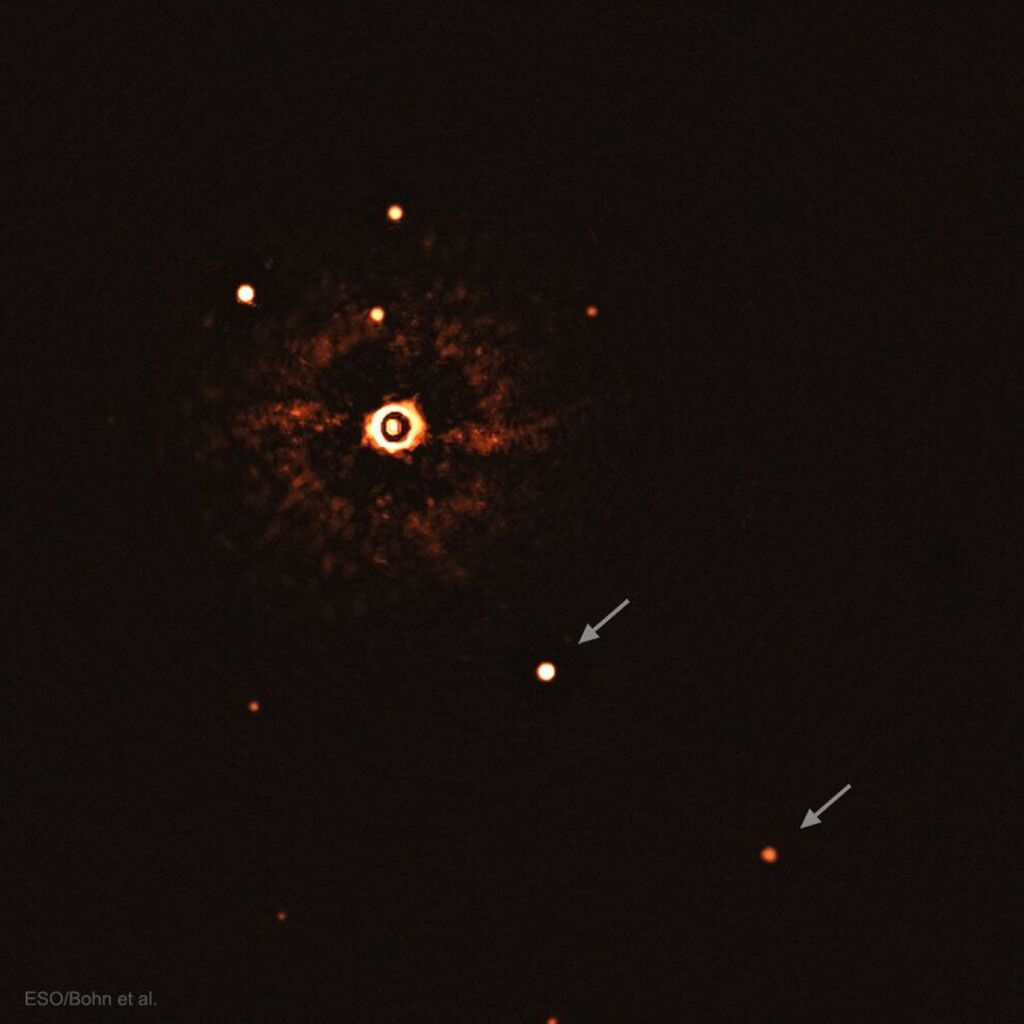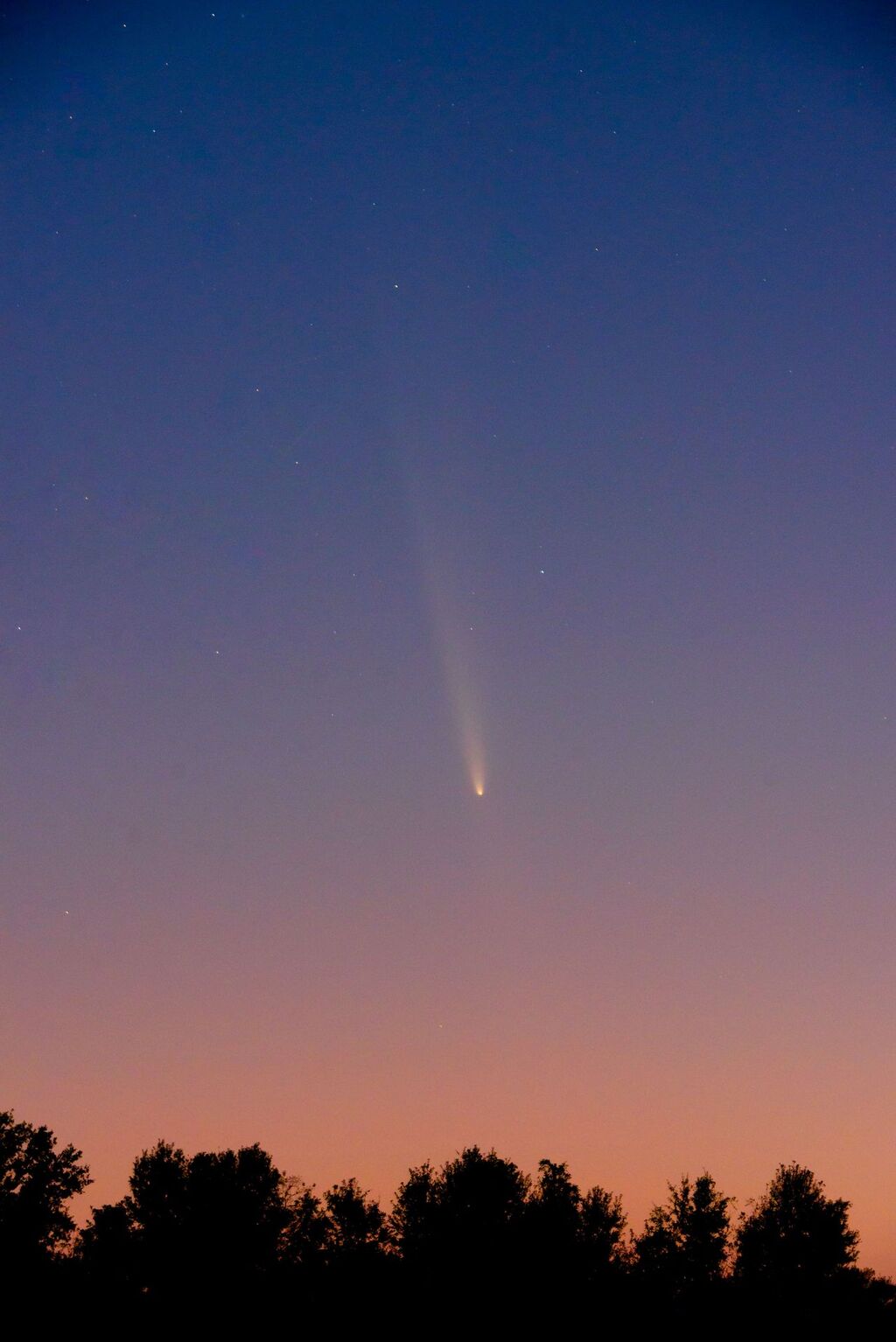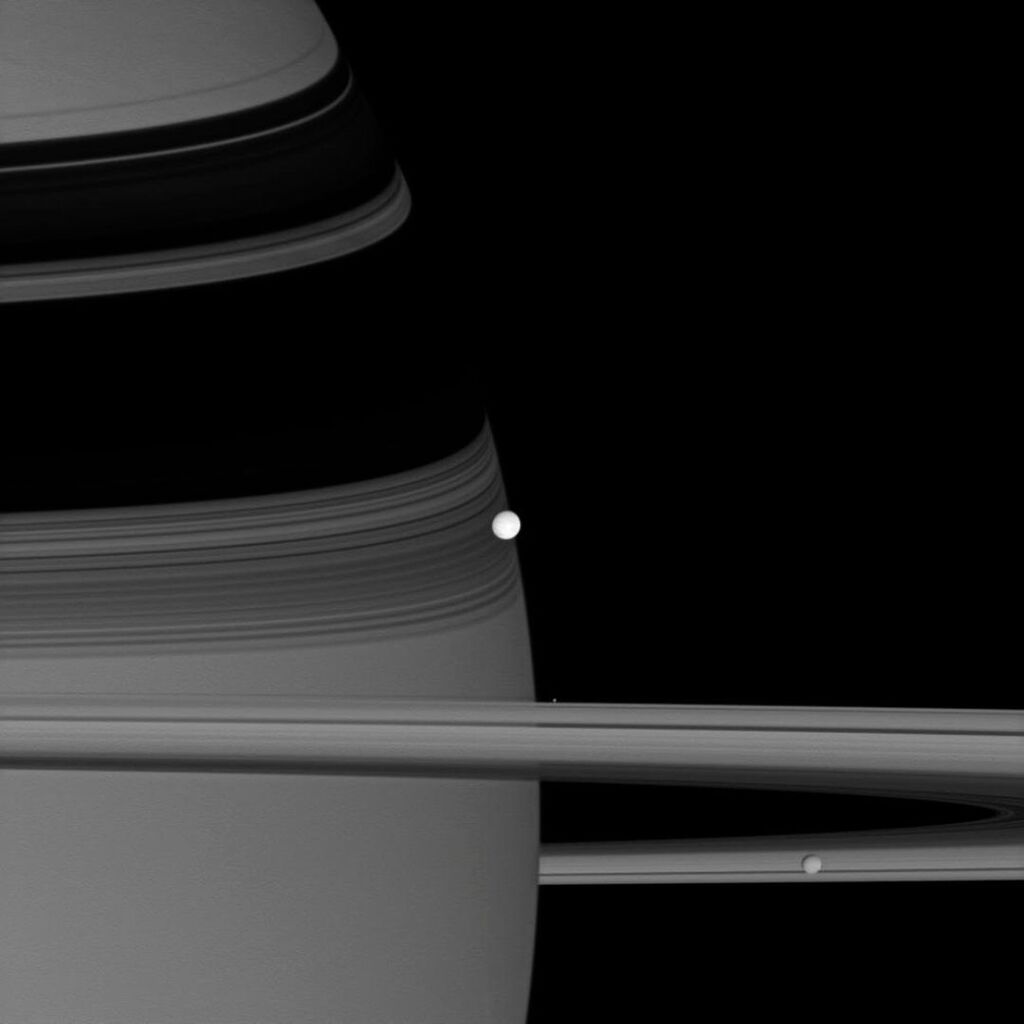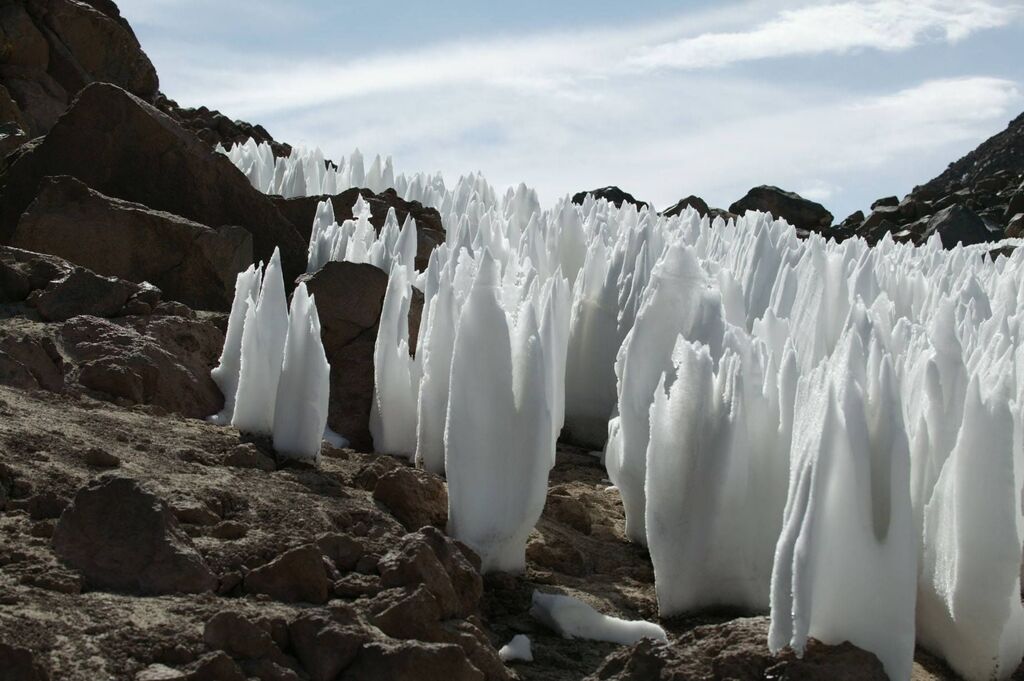
Planetary Picture of the Day
Week of October 21, 2024
Distant planets, distant moons, and strange phenomena in the sky and on Earth.
Monday, 21 October 2024

Text: APOD
Multiple Planets around a Sun-Like Star
For the first time, a pair of planets has been directly imaged around a Sun-like star. These exoplanets orbit the star designated TYC 8998-760-1 and are identified by arrows in the featured infrared image. At 17 million years old, the parent star is much younger than the 5-billion-year age of our Sun. Also, the exoplanets are both more massive and orbit further out than their Solar System analogs: Jupiter and Saturn. The exoplanets were found by the ESO's Very Large Telescope in Chile by their infrared glow – after the light from their parent star was artificially blocked. As telescopes and technology improve over the next decade, it is hoped that planets more closely resembling our Earth will be directly imaged.
Tuesday, 22 October 2024

NASA Michoud Gets a Rare Visitor
Comet C/2023 A3 (Tsuchinshan-ATLAS) passes over NASA’s Michoud Assembly Facility in New Orleans in this Oct. 13, 2024, image. This comet comes from the Oort Cloud, far beyond Pluto and the most distant edges of the Kuiper Belt. Though Comet C/2023 A3 will be visible through early November, the best time to observe is between now and Oct. 24.
Wednesday, 23 October 2024

Circumhorizontal Arc
Sometimes called a "fire rainbow" (although involving neither fire nor a rainbow), a circumhorizontal arc occurs when sunlight refracts off of ice crystals in the atmosphere. This phenomenon is different from the more commonly seen ice halo and can be seen at twice the distance and parallel to the horizon. If the icy clouds are broken up, the arc will also be fragmented, leading to a "fiery" appearance. Photograph taken on 11 August 2024 above peak 12225 in the Sierra Mountains of California.
Thursday,24 October 2024

How Many Moons?
In this 2007 image acquired by NASA's Cassini spacecraft, three of Saturn’s moons are captured, photobombing the planet’s picture. Enceladus appears bright at the center, tiny Pandora is barely visible close to the rings, and Mimas is located at the lower right against the backdrop of the rings.
Enceladus measures 504 kilometers in diameter, while the smaller moon Mimas is 396 kilometers wide, and Pandora is only 81 kilometers wide.
The image was taken at a distance of 291,000 kilometers from Enceladus using Cassini’s wide-angle camera. The portion of Saturn seen in the image is illuminated by sunlight, allowing for a clearer view of the ring structure and moons. The viewpoint is about one degree below the ring plane, which is the flat plane where most ring particles orbit.
Friday, 25 October 2024

Army of Ghosts
Like an army of ghosts, snow penitents conquered the slopes of a 5,300-m-high volcano in the Bolivian Andes. Sublimation and wind erosion give ice this ghostly appearance. Some were almost as tall as the photographer (5' 7"). They were somewhere in her favorite playground, not too far away from the Licancabur volcano.





